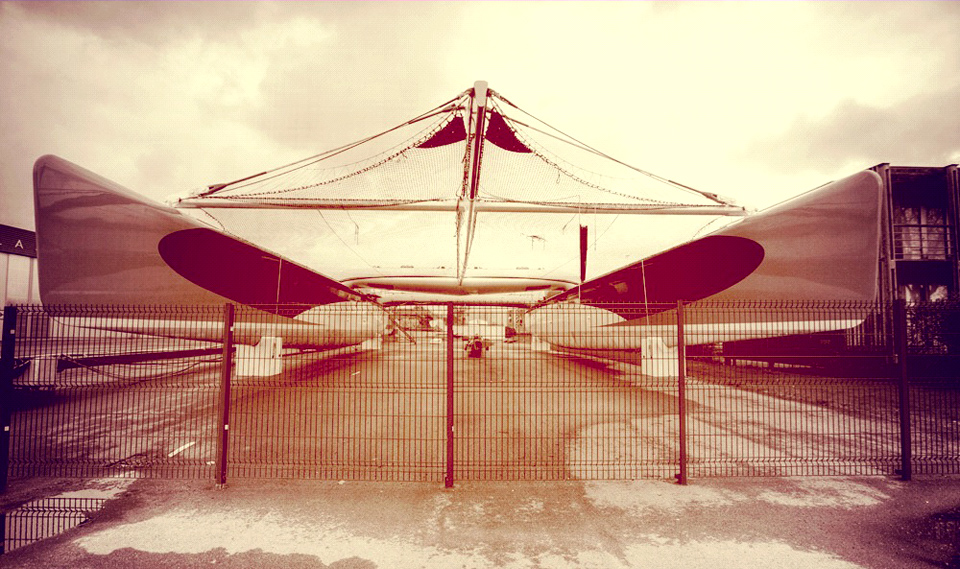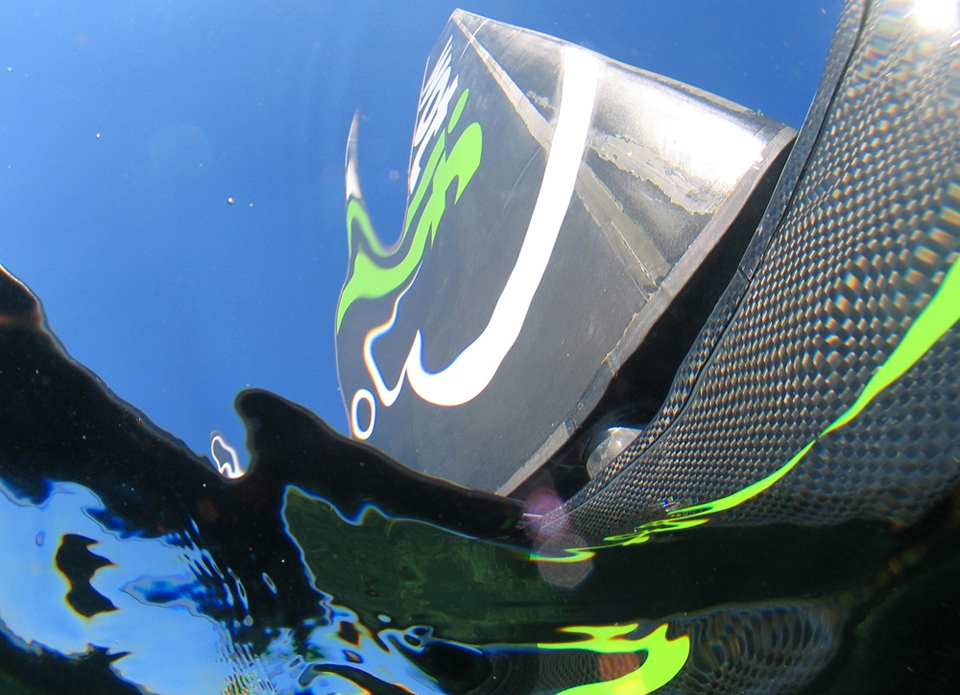 Fade to Orange
Fade to Orange
Orange 2 was a battlewagon of a solution to the Jules Verne problem that turned out to be the right tool for a 50-day job in 2005, but the way the trimarans Groupama 3 and then BP5 shattered just about every record that Bruno Peyron’s big cat took brings up an obvious question: Will we ever see a new record-breaking maxi cat again? This study in geometry comes from earlier this year at the Multiplast yard in Vannes, Brittany.
Words: Alan Block
Posts tagged world speed sailing record
Jun 08
Wot Rocket
Belmont, New South Wales, Australia 33º02’09″S 151º39’12″E
 Australia’s attempt to reclaim the 500m world speed sailing record.
Australia’s attempt to reclaim the 500m world speed sailing record.
Pilot Sean Langman and co-pilot Joe Dekock testing the Wot Rocket for the world speed sailing record attempt at Belmont, Lake Macquarie.
The Wot Rocket is half sailboat/sail plane; a nine meter long canoe style hull with two tiny foils, each about a sixth of the size of a Moth foil and a nine meter rigid sail, then a traverse beam out of an aerodynamic twin pod crew compartment. It is built entirely from carbon fiber and weighs approximately 400 kilos.The difference between this sailboat/sail plane and any that have come before it is that it will be attempting to break through the water speed barrier using a technology as yet untried on any sailing craft – supercavitation – to reduce the drag which is around 1,000 times greater in the water than in air.
Supercavitation will in effect mean Wot Rocket flies in a gas bubble created by the outward deflection of water by a specially shaped nose cone and the expansion of gases from its fin and foil design. By keeping water from contacting the surface of the body of Wot Rocket, this will significantly reduce drag and allow extremely high speeds.
The concept behind the Wot Rocket approach is to induce supercavitation at lower speeds where control can still be maintained and from there push through to the top speeds.Supercavitation means Wot Rocket should only require a fraction of the 45-50 knot winds that Albeau needed to go 0.39 knots better than the previous record. A moderate 18-20 knots should do the trick believes Langman.



